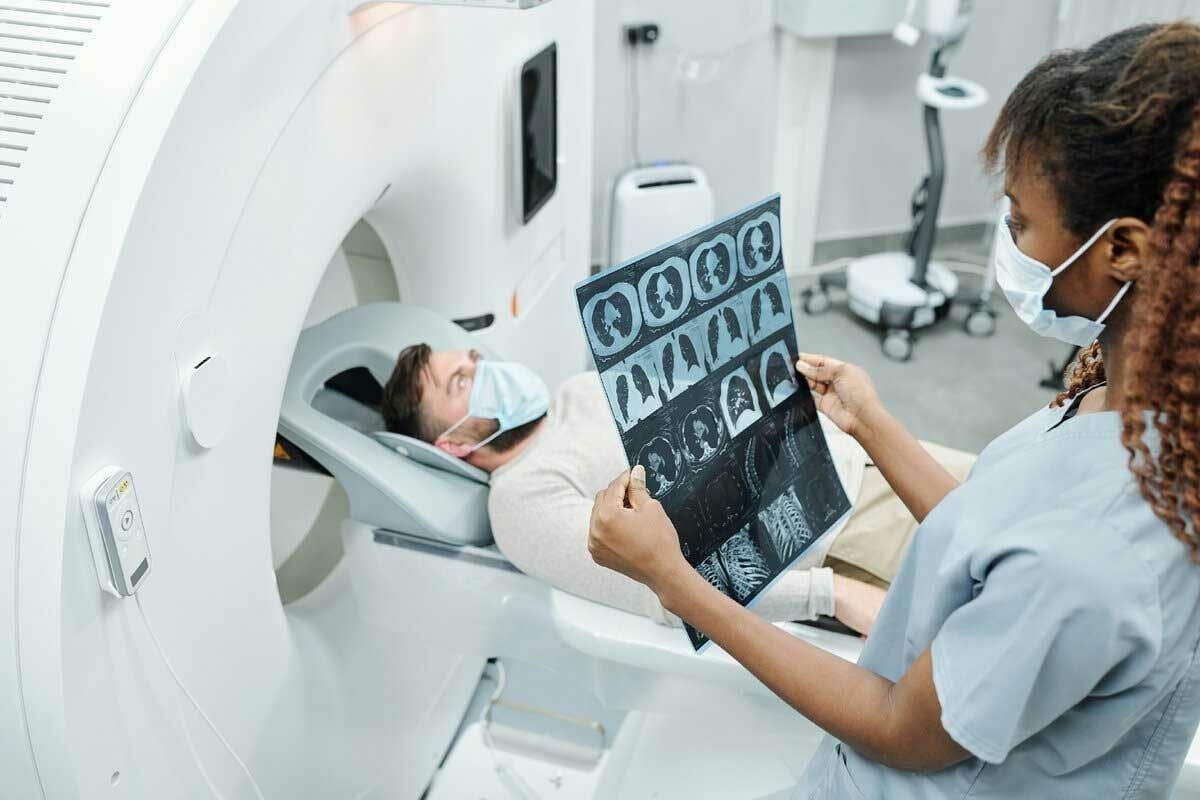Last Updated on November 26, 2025 by Bilal Hasdemir

Did you know that sonography for pregnant women has become a routine part of prenatal care? Many pregnant individuals have multiple ultrasounds during their pregnancy. While it’s seen as safe and valuable, there are concerns about its safety and necessity.
The use of sonography for pregnant women in pregnancy has changed a lot over the years. It’s now a common practice in prenatal care. But, it’s important for expectant parents to understand its implications, including benefits and limitations.ns.
Key Takeaways
- Understanding the evolution and current use of ultrasound in pregnancy.
- Examining the benefits of ultrasound for fetal monitoring.
- Discussing the risks and controversies surrounding ultrasound.
- Guidance on making informed decisions about ultrasound during pregnancy.
- Exploring alternatives and complementary approaches to prenatal care.
The Evolution of Prenatal Ultrasound Technology
Ultrasound technology in prenatal care has changed a lot from the 1950s. It has made care better and helped us understand how babies grow.
Historical Development of Ultrasound in Obstetrics
The first use of ultrasound in obstetrics was in the 1950s. Pioneers like Ian Donald started it all. Over time, technology got better, giving us clearer images and more info on baby development.
How Modern Ultrasound Technology Works
Today’s ultrasound uses sound waves to see the fetus. A transducer sends out sound waves, which bounce back as echoes. These echoes create images on a screen. Improvements in transducers and processing have made these images clearer.
Changes in Ultrasound Usage Patterns Over Decades
How we use ultrasound has changed a lot. It’s now a regular part of prenatal care, not just for high-risk pregnancies. The timing and frequency of ultrasounds have changed based on new research and guidelines. Some key changes include:
- More ultrasounds during pregnancy
- Ultrasound earlier for dating and checking if the baby is okay
- Using Doppler ultrasound to check the baby’s blood flow
- Introducing 3D and 4D ultrasound for detailed baby images
These updates show our ongoing effort to make prenatal care better for everyone.
Standard Ultrasound Protocols During Pregnancy
Ultrasound protocols are key for tracking fetal growth during pregnancy. They give vital info on how the fetus is growing. They also help spot problems early and guide medical choices.
First Trimester Ultrasound Examinations
The first ultrasound, done between 11 and 14 weeks, is very important. It checks if the pregnancy is viable, guesses the due date, and looks for genetic issues. It can also find problems like an ectopic pregnancy.
Second Trimester Anatomy Scans
Between 18 and 22 weeks, a detailed scan is done. This scan looks at the fetus’s body, like the brain and heart. It checks for any structural problems.
Third Trimester Growth and Position Assessments
In the third trimester, ultrasounds check how the fetus is growing and its position. They also look at the placenta. These checks are key for spotting issues like slow growth or placenta problems.
Medical Indications for Additional Ultrasounds
More ultrasounds might be needed if there’s a twin pregnancy, past pregnancy issues, or worries about the fetus’s health. These extra scans help manage pregnancy care.
| Trimester | Ultrasound Purpose | Typical Gestational Age |
| First | Confirm viability, estimate gestational age, screen for chromosomal abnormalities | 11-14 weeks |
| Second | Detailed anatomy scan, assess fetal anatomy | 18-22 weeks |
| Third | Monitor fetal growth, assess fetal position, evaluate placenta | 28-36 weeks |
Knowing about these ultrasound protocols is vital for both parents-to-be and healthcare teams. It helps make better choices for prenatal care.
The Science Behind Sonography for Pregnant Women
Understanding sonography is key for expectant mothers. It helps them make smart choices about their prenatal care. Sonography, or ultrasound, uses sound waves to show images of the fetus. This gives insights into how the fetus is growing and its health.
The Science Behind Sonography for Pregnant Women
Understanding sonography for pregnant women is key for expectant mothers. It helps them make smart choices about their prenatal care. Sonography for pregnant women, also called ultrasound, uses sound waves to show images of the fetus. This gives insights into how the fetus is growing and its health.
How Sound Waves Interact with Fetal Tissue
Sonography for pregnant women works by using sound waves that are too high for humans to hear. When these waves hit the fetus, they bounce off in different ways. This bouncing back creates echoes that the ultrasound device captures to make images.
The way sound waves interact with the fetus is important for clear images. Different tissues reflect sound waves differently. For example, bone reflects more than soft tissue, making it appear brighter on the screen. This precision makes sonography for pregnant women a safe and effective diagnostic tool.
Different Types of Ultrasound Technology
There are many types of sonography for pregnant women used during pregnancy. Each one has its own purpose:
- 2D Ultrasound: Gives two-dimensional images of the fetus, great for checking its anatomy.
- 3D Ultrasound: Creates three-dimensional images, showing more details of the fetus.
- Doppler Ultrasound: Helps check blood flow through vessels, important for the fetus’s circulation.
By understanding the science behind sonography for pregnant women, expectant mothers can feel more confident and informed throughout their pregnancy journey.
Each ultrasound technology has its own benefits. Together, they help understand the fetus’s health fully.
Energy Transfer During Ultrasound Procedures
During an ultrasound, energy is sent from the probe to the body through sound waves. The amount of energy is very small. The technology is made to keep the fetus safe.
“The safety of ultrasound technology has been a subject of extensive research, with ongoing studies examining its long-term effects.”
” Statement from a leading medical research institution
Studies on ultrasound energy transfer keep going. They make sure sonography’s benefits are high while risks are low.
| Type of Ultrasound | Primary Use | Benefits |
| 2D Ultrasound | Assessing fetal anatomy | Detailed views of fetal structures |
| 3D Ultrasound | Detailed examination of fetal features | Enhanced visualization for diagnostic purposes |
| Doppler Ultrasound | Monitoring blood flow | Crucial for assessing fetal circulation |
Potential Physical Risks of Prenatal Ultrasound

As prenatal ultrasound technology gets better, it’s important to know its risks. This tool is key for checking on the baby’s growth. But, there are worries about its effects on the fetus.
Thermal Effects on Developing Tissues
One big worry is the thermal effects on growing tissues. The ultrasound device sends out sound waves that can warm up tissues. This warming could harm sensitive areas like the brain, if it goes on too long.
Acoustic Cavitation Concerns
Acoustic cavitation is another concern. It’s when ultrasound waves create and then burst tiny gas bubbles in tissues. This could damage the tissue around it. Even though the risk is small, scientists keep studying it.
Research on Cell Development Disruption
Research looks into how ultrasound might mess with cell growth. Some studies say it could mess with how cells move and change. But, more research is needed to know for sure.
Duration and Intensity Considerations
How long and how strong the ultrasound is matters a lot. Doctors aim to use the least amount needed to get the right info. This helps keep risks low.
In short, while ultrasound is mostly safe, we should know about its risks. These include thermal effects, acoustic cavitation, and cell disruption. By following guidelines, doctors can use this tool safely for checking on the baby.
Possible Neurological and Developmental Concerns
Ultrasound is a key tool for checking on fetuses, but it might affect their brain development. This is because some studies have looked into how ultrasound might impact fetal brain growth and development.
Studies on Ultrasound and Neurological Development
Research has looked into how ultrasound might affect a child’s brain. Some studies suggest that too much ultrasound could change how a brain grows and works.
A study in a Journal found ultrasound might affect brain cell movement in animals. But, it’s important to remember these findings might not apply to humans.
Potential Effects on Brain Cell Migration
Brain cell migration is key during fetal development. Any issues here could lead to brain problems. Some research suggests ultrasound might interfere with this process, but the evidence is not clear.
Studies have shown mixed results. Some say ultrasound can change how brain cells move, while others see no effect. How long and how strong the ultrasound is might play a big role in the outcome.
Research Limitations and Conflicting Evidence
There’s a lot of research on ultrasound’s effects on the brain, but it’s not all clear. Many studies have flaws, and we need more big, long-term studies to get solid answers.
A detailed look at the research shows we need better studies. We need to understand both the risks and benefits of using ultrasound during pregnancy.
| Study | Findings | Limitations |
| Animal study on ultrasound exposure | Changes in neuronal migration patterns | Results may not translate to humans |
| Human observational study | No significant effects on neurological development | Limited sample size and follow-up period |
| Review of multiple ultrasound studies | Mixed results regarding neurological effects | Variability in study methodologies and exposure levels |
In summary, there are worries about ultrasound’s effects on brain and development, but we’re not sure yet. We need more research to understand any risks and to make sure ultrasound is safe during pregnancy.
Psychological and Social Implications
Prenatal ultrasound does more than just check on the baby’s health. It affects how expectant parents feel and interact with each other. It gives us a peek into the baby’s growth but also brings up some important issues.
Increased Parental Anxiety from Ambiguous Findings
One big worry is parental anxiety caused by unclear ultrasound results. When the findings are not straightforward, parents might get really stressed. This stress can make their pregnancy time more difficult.
The Commercialization of Keepsake Ultrasounds
Keepsake ultrasounds have become popular for non-medical reasons. They give parents a special keepsake but also raise some concerns. There’s worry about too much ultrasound use and the chance of being taken advantage of.
Impact on Maternal-Fetal Bonding
Ultrasound can also change maternal-fetal bonding. Seeing the baby on the screen can make the mother feel closer to her child. But how much this bonding is affected can differ from person to person and situation to situation.
In the end, ultrasound technology has many benefits. But we need to think about its effects on parents’ feelings and relationships. This way, we can use it in a way that’s good for everyone involved.
Medical Benefits and Diagnostic Value
Ultrasound in pregnancy is key in modern obstetric care. It offers many benefits. It lets doctors watch how the fetus grows and spot problems early.
Detecting Structural Abnormalities
Ultrasound is great at finding problems in the fetus’s structure. This includes heart issues, neural tube defects, and other malformations. Finding these problems early helps plan the pregnancy better.
Table: Common Structural Abnormalities Detected by Ultrasound
| Abnormality | Description | Typical Detection Timeframe |
| Neural Tube Defects | Conditions such as spina bifida | 16-20 weeks |
| Heart Defects | Structural issues with the heart | 18-24 weeks |
| Cleft Lip/Palate | Gaps in the lip or palate | 18-22 weeks |
Monitoring Fetal Growth and Development
Ultrasound is also key for tracking fetal growth and development. Regular scans help doctors see if the fetus is growing right. They can spot any growth issues.
Identifying Pregnancy Complications
Ultrasound also helps find pregnancy problems like placenta previa or twins. Spotting these early lets doctors plan the best care.
Guiding Medical Decision-Making
Ultrasound info is very helpful for making pregnancy decisions. It shows detailed images of the fetus and placenta. This helps doctors decide on treatments or more tests.
In summary, ultrasound is very important in pregnancy care. It helps find problems, track growth, spot complications, and guide decisions. Ultrasound technology greatly improves prenatal care.
The Controversy Around Routine Ultrasounds
The debate over routine ultrasounds shows we need a balanced view on prenatal care. Ultrasounds help track how a baby is growing. But, questions about their need, how often they should be done, and their risks have sparked a lot of discussion.
Medical Necessity vs. Standard Practice
It’s hard to tell when ultrasounds are really needed. Many pregnant women get several ultrasounds during their pregnancy. But, studies say not all of these are necessary.
Evidence-based guidelines suggest ultrasounds are mainly for specific medical reasons. This includes checking for any problems with the baby or the pregnancy.
Using ultrasounds too much without a good reason worries some people. They think it could lead to more medical interventions and higher costs. Others believe it helps reassure and keep an eye on the baby’s health.
International Differences in Ultrasound Protocols

How often and why ultrasounds are used varies a lot around the world. For example:
| Country | Recommended Number of Ultrasounds | Primary Reasons for Ultrasound |
| United States | At least 2 (one in the first, one in the second trimester) | Fetal development, detecting abnormalities |
| United Kingdom | 1 or 2 (depending on risk factors) | Fetal anomaly screening, growth monitoring |
| Canada | 1 or 2 routine ultrasounds | Confirming gestational age, detecting anomalies |
This table shows how different countries handle ultrasounds. It points out the need for clear, evidence-based rules.
Evidence-Based Recommendations vs. Common Practice
There’s often a gap between what research says and what happens in real life with ultrasounds. Groups like the American College of Obstetricians and Gynecologists (ACOG) give guidelines. But, actual practices can differ a lot.
It’s important to match what we do in clinics with the latest research. This way, pregnant women get the right care. It balances the good and bad of using ultrasound technology.
Non-Medical Ultrasounds: Entertainment vs. Risk
Boutique ultrasound services offer personalized ultrasound experiences. They raise questions about risks and benefits. These services are popular for creating memorable moments for expectant parents.
The Rise of Boutique Ultrasound Services
Ultrasound use for non-medical purposes has grown. Boutique services provide advanced technology in a personalized, luxurious setting. Supporters see these services as a special bonding time for families. Critics worry about risks and the lack of medical need.
Key features of boutique ultrasound services include:
- Advanced ultrasound technology
- Personalized experiences for expectant parents
- Luxurious settings for the ultrasound procedure
- Creation of keepsake images or videos
FDA and Medical Organization Positions
The FDA and medical groups have spoken out on non-medical ultrasound use. The FDA says ultrasounds are for medical use only. They warn against using them for fun or keepsakes.
“Ultrasound is a powerful tool that should be used only for medical purposes. Promoting or prescribing it for non-medical reasons is not supported by scientific evidence and may pose unnecessary risks.”
FDA Statement
Risk-Benefit Analysis of Non-Medical Scans
It’s important to think about the benefits and risks of non-medical ultrasounds. These services may help parents bond emotionally. But, they also carry risks like unnecessary ultrasound exposure and false reassurance or anxiety.
Considerations for a risk-benefit analysis include:
- The intensity and duration of the ultrasound exposure
- The possibility of misinterpreting ultrasound images
- The emotional impact on expectant parents
- The lack of medical supervision in non-medical settings
In conclusion, while boutique ultrasound services offer a unique experience, it’s vital to weigh the risks and benefits. Ultrasound use should always be guided by medical professionals and based on sound medical judgment.
Alternative Monitoring Methods During Pregnancy
There are many ways to check on a baby’s health during pregnancy, aside from ultrasound. These methods help us understand how the baby is doing without the risks of more invasive tests.
Traditional Clinical Assessment Techniques
For a long time, doctors have used physical exams, medical history, and symptoms to keep an eye on pregnancies. This helps spot any problems early on.
Fetoscope and Doppler Stethoscope Options
Fetoscopes and Doppler stethoscopes are tools that let doctors hear the baby’s heartbeat without touching the belly. A fetoscope is a special stethoscope for this purpose. A Doppler stethoscope uses sound waves to find the baby’s heartbeat and blood flow.
| Monitoring Method | Description | Benefits |
| Fetoscope | Specialized stethoscope for listening to fetal heartbeat | Non-invasive, low-cost |
| Doppler Stethoscope | Uses sound waves to detect fetal heart activity | Provides real-time feedback, non-invasive |
| Maternal Awareness | Tracking fetal movements through self-monitoring | Empowers pregnant women, encourages engagement |
Maternal Awareness and Kick Counting
Maternal awareness lets pregnant women keep track of their baby’s movements. This is often done through kick counting. It helps women feel more involved in their baby’s health and can spot problems early.
Laboratory Tests and Other Screening Methods
Lab tests and screenings are also key in checking a baby’s health. These include blood tests, genetic screenings, and more. They help find any issues before they become serious.
Using these methods in prenatal care gives doctors a better way to watch over pregnancies. It helps them find the right balance between keeping an eye on the baby and avoiding too many tests.
Making Informed Decisions About Prenatal Imaging
Understanding prenatal imaging’s benefits and risks is key. Pregnant women should make choices based on accurate, unbiased info. This empowers them to decide what’s best for their health.
Questions to Ask Your Healthcare Provider
When talking to your healthcare provider about prenatal imaging, ask important questions. Find out the ultrasound’s purpose, its risks, and other ways to check on the baby.
- What is the medical necessity for the recommended ultrasound?
- Are there any risks or side effects from the procedure?
- What other methods can be used to check on the baby’s growth?
Evaluating Your Individual Risk Factors
Every pregnancy is different. Knowing your unique risk factors helps in making choices about prenatal imaging. Things like past pregnancy issues, genetic risks, or health problems can affect your need for ultrasounds.
| Risk Factor | Description | Impact on Ultrasound Decision |
| History of Pregnancy Complications | Previous issues like miscarriage, preterm labor, or other problems. | More ultrasounds might be needed for careful monitoring. |
| Genetic Predispositions | Family history of genetic disorders or chromosomal issues. | More or special ultrasounds might be needed to check on the baby’s health. |
| Other Health Concerns | Conditions like diabetes or high blood pressure. | More careful watching of the baby’s growth might be needed. |
Balancing Medical Benefits with Concerns
Prenatal imaging has big benefits, like spotting problems and tracking growth. But, risks like thermal effects or acoustic cavitation are also important to think about.
Advocating for Minimal and Focused Ultrasound Use
It’s important to push for using ultrasound only when really needed. This means supporting practices that follow guidelines for when ultrasounds are necessary.
By being informed and involved, pregnant women can make choices that fit their values and health needs. This helps ensure the best for their pregnancy.
Current Research and Evolving Perspectives
Medical technology keeps getting better, changing how we see ultrasound’s role in pregnancy. New studies and updated medical guidelines are reshaping prenatal care.
Recent Scientific Studies on Ultrasound Safety
Many studies have looked into ultrasound safety during pregnancy. A 2019 study published in a Journal showed no harm to fetal development. Yet, ongoing research is looking into possible long-term effects.
Changing Medical Guidelines and Recommendations
Medical groups update their guidelines as new evidence comes in. The American College of Obstetricians and Gynecologists (ACOG) has updated its ultrasound use in pregnancy guidelines recently.
| Year | Guideline Update | Key Change |
| 2018 | ACOG Guidelines | Routine ultrasound for all pregnancies recommended |
| 2020 | ACOG Revised Guidelines | Selective use of ultrasound based on risk factors |
Areas of Ongoing Research and Investigation
Research is ongoing to understand ultrasound’s long-term effects on babies. It’s also looking into the benefits of 3D and 4D ultrasound.
By keeping up with new research, healthcare providers and parents-to-be can make better choices for prenatal care.
Conclusion: A Balanced Approach to Prenatal Ultrasound
A balanced view of prenatal ultrasound looks at its good sides and possible downsides. We’ve talked about how ultrasound technology has grown, its medical benefits, and some concerns.
Ultrasound is an essential tool in modern pregnancy care, offering detailed insights into fetal growth and potential issues, though its risks must also be considered, like how it might affect the baby’s tissues and the chance of acoustic cavitation.
Knowing how ultrasound works and its risks helps parents make smart choices about their care. A balanced approach means looking at your own risks, asking questions, and choosing when and how to use ultrasound.
In the end, a balanced view of prenatal ultrasound lets parents use its benefits while avoiding risks. By staying informed and talking openly with doctors, parents can pick the best care for themselves and their baby.
FAQ
Are ultrasounds safe for pregnant women and their babies?
Ultrasounds are usually safe when used right and with care. But, it’s key to think about the good they do and any possible dangers. Always follow the advice of medical experts.
How often are ultrasounds performed during pregnancy?
How often ultrasounds happen can vary. Most women have one or two during pregnancy. But, some might need more if there are health reasons.
What is the purpose of a first-trimester ultrasound?
The first ultrasound in pregnancy checks a few things. It confirms the pregnancy, finds out how far along you are, and looks for any issues.
Are non-medical ultrasounds, such as keepsake ultrasounds, safe and recommended?
Medical experts and groups like the FDA don’t suggest non-medical ultrasounds. They might not be safe and don’t offer any health benefits.
Can ultrasounds detect all pregnancy complications or abnormalities?
Ultrasounds are very helpful, but they’re not perfect. Some problems might not show up on an ultrasound.
How do I make informed decisions about prenatal imaging?
To make good choices, talk to your doctor about your health and worries. Ask about the good and bad of ultrasounds.
Are there alternative monitoring methods during pregnancy?
Yes, there are other ways to check on your baby. These include regular doctor visits, listening with special tools, and counting your baby’s kicks. There are also lab tests and other screenings.
What are the possible risks associated with prenatal ultrasound?
Some risks include damage from heat, problems with sound waves, and worries about how they might affect cell growth. But, more research is needed to fully understand these risks.
Can I request an ultrasound during pregnancy?
You can talk to your doctor about wanting an ultrasound. But, they should only do them when it’s really needed. This helps keep you and your baby safe.
How has ultrasound technology evolved over time?
Ultrasound tech has gotten much better. Now, images are clearer, and there are more safety features. This means better care for you and your baby.
References
- Moustafa, A. F., et al. (2020). Color Doppler Ultrasound improves machine learning diagnosis of breast cancer by extracting vascularity features. PMC, 2020.
https://www.ncbi.nlm.nih.gov/pmc/articles/PMC7555557
- Oebisu, N., et al. (2014). Contrast-enhanced color Doppler ultrasonography increases diagnostic accuracy for soft tissue tumors. Oncology Reports, 32(4), 1654-1660.
https://www.spandidos-publications.com/10.3892/or.2014.3378
- Medeiros, L. R., et al. (2009). Accuracy of ultrasonography with color Doppler in predicting diagnosis of pelvic masses. European Journal of Radiology, 71(2), 301-307.
https://www.sciencedirect.com/science/article/pii/S1048891X24026732






